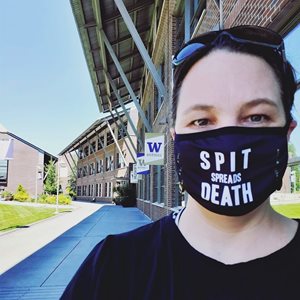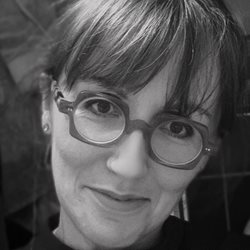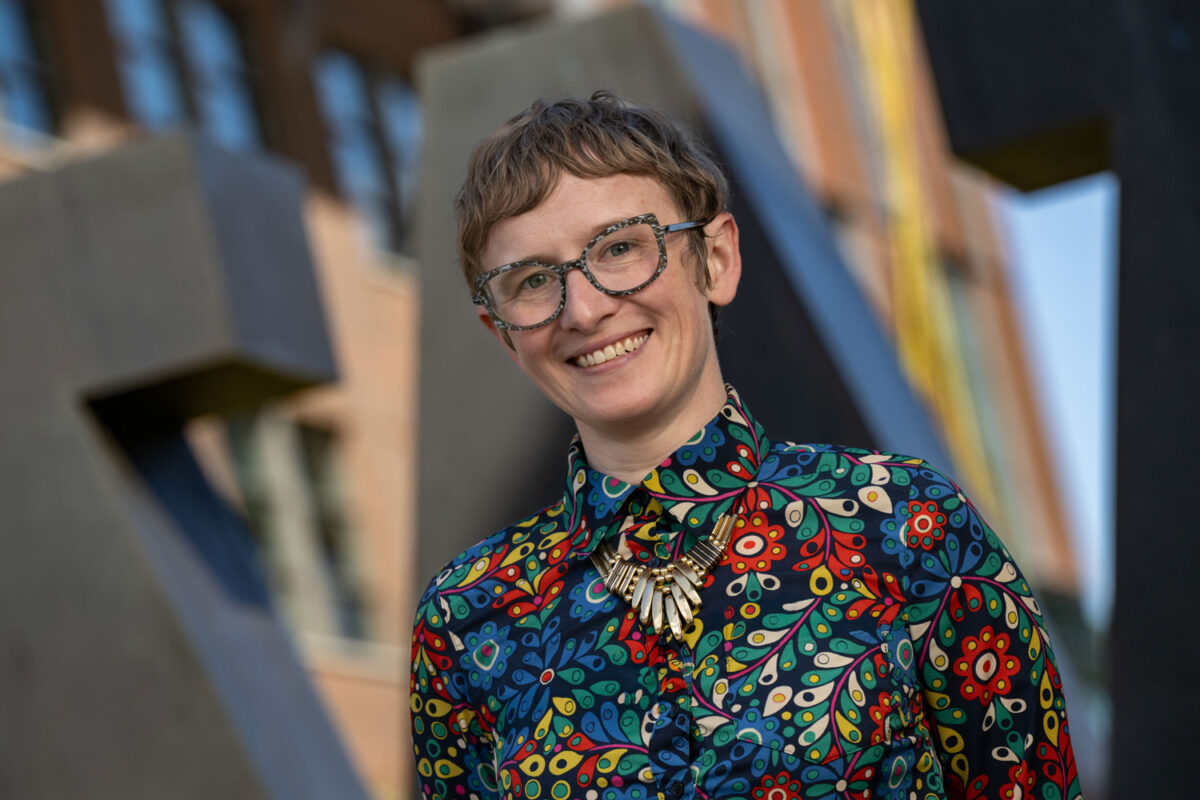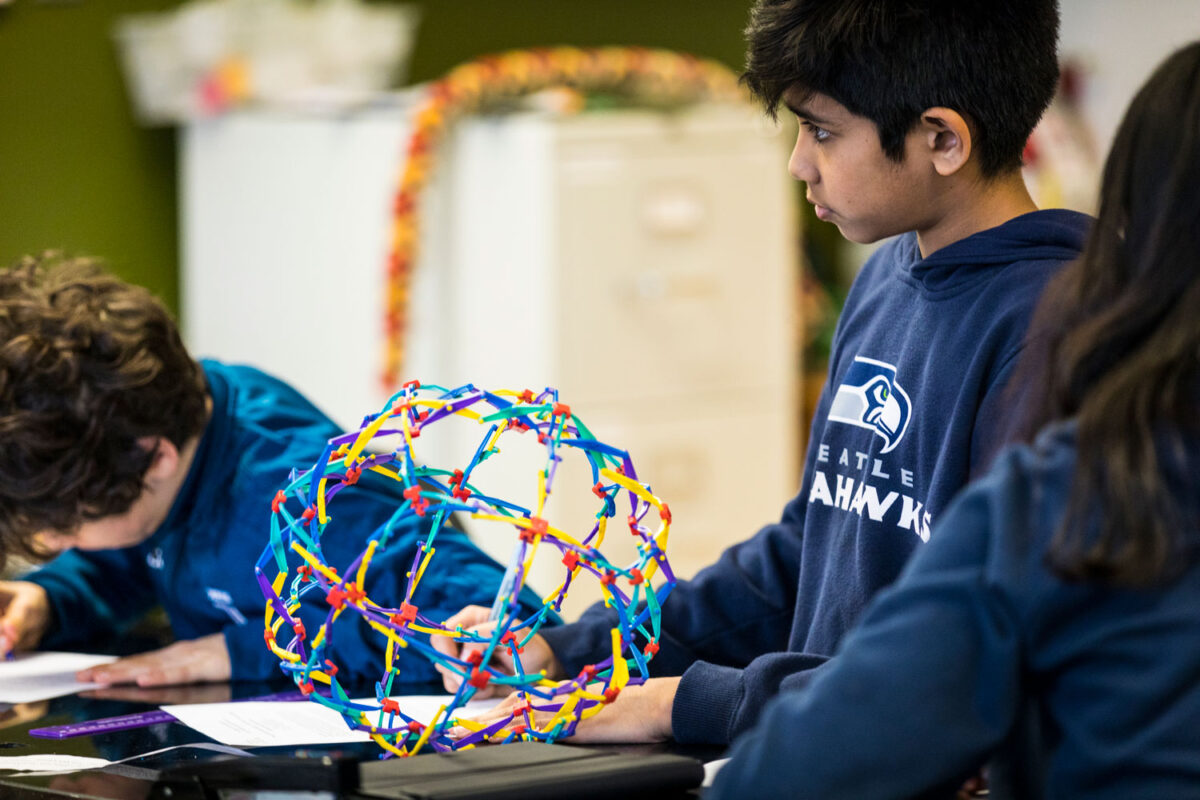Dr. Stefanie Iverson Cabral, assistant teaching professor in the School of Nursing & Health Studies at the University of Washington Bothell, has been teaching Disease, Human History, Society & Civilization for almost a decade.
It wasn’t until February 2020 that she taught the course, which explores the implications of pandemics on society, while simultaneously living through one.

“I used to ask my students to imagine what living through a pandemic would be like — how they would go to school or work, get their groceries or go to the bank,” Iverson Cabral said. “That had always been very challenging for them to try to conceptualize. A lot of the times they would say things like, ‘Well, I would probably miss a few days of school’ or even that they would probably be fine because they were healthy.
“We have since come to find out that sadly, that is not the case.”
Endings and eradications
Throughout the quarter, students compare and contrast nine of the worst infectious diseases and then look at the differences and similarities between them and COVID-19. Iverson Cabral said a lot of her students since COVID-19 hit enrolled in the class to find out when the current pandemic will end and how.
She explains that historically pandemics generally have two types of endings, the medical and the social. “The medical ending is defined by a substantial decline in contamination and death rates, whereas the social ending is a result of a decline in fear of the disease,” she said. “As we are seeing with COVID-19, an end to a pandemic can occur not because a disease has been eradicated but because the desire for normalcy outweighs the fear of infection.”
One of the first diseases her winter quarter 2022 class studied was smallpox, which is among the few epidemics that came to a true medical ending last century. Iverson Cabral said smallpox was exceptional for a number of reasons, one of which is that it led to the creation of the first effective vaccine that provides lifelong protection. “Before the vaccine, the best-case scenario was a 30% mortality rate. The worst-case scenario was 90%,” she said. “After the vaccine, there was a less than 0.1% chance of dying.”
Also significant in the ability to eradicate smallpox was that the virus had no animal host so eliminating it in humans meant total elimination. To date, the World Health Organization has only declared two diseases officially eradicated — smallpox and rinderpest.
“Because COVID-19 was first discovered in bats and has since spread to minks, large cats and non-human primates, it does not fit the criteria for eradication. Instead, the goal is to control the spread,” Iverson Cabral said.
In terms of similarities, the class draws parallels between smallpox and COVID-19 based on how the disease is spread and the public’s resistance to vaccination. “Both are respiratory diseases, so the virus is/was spread by droplets that come from coughing and sneezing,” she said. “And just like modern day, some of the public was hesitant to receiving vaccination.”
Iverson Cabral explained that hesitancy for receiving the smallpox vaccine was because it came from cowpox, a closely related virus found in cattle, and the public thought it was unnatural and against God. “COVID-19 has a 1% death rate and smallpox had up to 90%. We know how horrible things are now. Can you imagine what it was like then? You would think people would do whatever they could to survive, but vaccine hesitancy existed even at that extreme,” she said.
Past and present parallels
Another disease the class looked at was the 1918 influenza pandemic, one of the most severe pandemics in recent history. Roughly 500 million people — one-third of the world’s population — became infected with the virus. There were an estimated 50 million worldwide deaths, 675,000 of which were in the United States.
“At the time, there was no vaccine nor were there any antibiotics to treat secondary infections associated with the virus, so control efforts were limited to non-pharmaceutical interventions such as isolation, quarantine mandates and the use of disinfectants — much like the initial response to COVID-19,” Iverson Cabral said.
Also like COVID-19, mandates during the influenza outbreak were different from state to state. The class looked at a case study from the peak of the second wave, comparing infection and death rates from Philadelphia and St. Louis, Missouri.
“St. Louis responded to the virus completely differently than Philadelphia did. Government officials in St. Louis told everyone to go home. They shut down schools, church — just about everything. Meanwhile, because this was in the middle of World War 1, Philadelphia decided to host this huge parade to boost war efforts,” Iverson Cabral said. “Thousands of people gathered together. Afterwards, St. Louis’ death rates stayed pretty consistent, not increasing nor decreasing, while Philadelphia’s skyrocketed with more than 800 people dying a day.”
There have been varying degrees of this in current times, with Washington state’s coronavirus mandates looking different than that of Texas, for example.
“I often ask my students to think about 100 years from now what people taking a similar class will say about how we weathered this pandemic,” she said. “I think that as a state, we have done well.”
Bring out the worst and best
The class also used the 1918 influenza to study the historical response to mask mandates. Because this outbreak occurred during a war and many soldiers were getting infected, wearing masks was at first seen as a patriotic act.
“Everyone was on board because they wanted to keep the soldiers healthy to win the war,” Iverson Cabral said. “But when the third wave of the pandemic hit, the war was over and the public response was completely different. This time, there was a huge mask protest in California that rallied thousands of people — there was even an anti-mask wearing league.”

Over the past two years, there has been a similar ongoing debate about whether mask-wearing can be legally enforced, with many prioritizing their comfort over public safety. “Sadly, this is nothing new,” Iverson Cabral said. “In many ways, we have just seen history repeating itself since the start of this pandemic.”
Florence Burrows, a junior majoring in Society, Ethics & Human Behavior, is in the winter quarter class and echoed Iverson Cabral’s sentiments. To her, what is most disappointing is the continuous scapegoating and blame that has historically, and currently, been placed on marginalized communities during pandemics.
“We saw this recently with the rise of Asian hate,” she said. “This was also present during the 1800 plague. Asian people were blamed because the infection started in their community. They applied quarantines and restrictions only for people of Asian descent — white people, on the other hand, could come and go as they pleased.
“History has shown us that pandemics can bring out the very worst in us, but also at times, the very best.”
In it together
Aside from teaching students about disease, Iverson Cabral also hopes that they learn science is not just for scientists.
“We are all impacted by science directly and indirectly,” she said. “The history of these diseases shows us that law, policy, communication, structural racism, ethics — they all play a part in science. There are so many opportunities to participate beyond just conducting experiments, and I hope that students walk away with that realization.”
Burrows, for one, definitely experienced the epiphany. She plans on becoming a family therapist and said the knowledge she gained in the course will be beneficial to her career. “One of the things I learned is that the pandemic has impacted various communities differently,” she said. “My plan is to renovate a van and drive to marginalized communities — the ones hardest hit — and offer pro bono therapy sessions for people who need it most.”
In addition to fostering knowledge, Iverson Cabral also hopes to foster change. “By teaching this class, I am able to help students understand why it is so important to get vaccinated and boosted. One of my goals is to remove the fear and hesitancy surrounding vaccination because there is a lot of false information and misunderstanding,” she said.
“By informing my students, my hope is that they can then inform their friends and family members and have an impact on their community. After all, we really are all in this together.”



